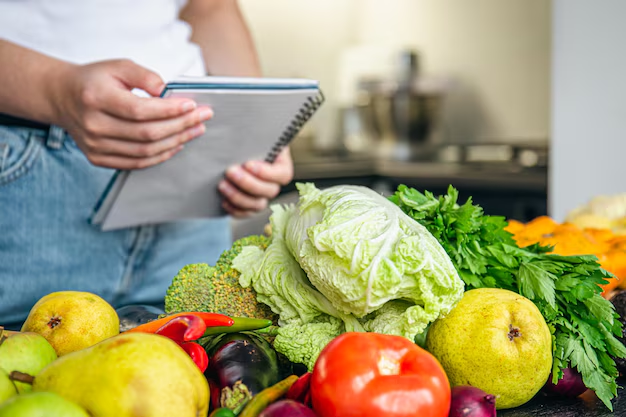The Ultimate Guide to Storing Produce in Your Refrigerator
Fresh produce is a staple in most kitchens, but keeping it fresh can be a challenge. Have you ever found yourself throwing out spoiled vegetables or mushy fruit? You're not alone. Let's dive into the art of storing produce in your refrigerator, ensuring it stays fresh and tasty for as long as possible. This guide will explore various ways to optimize the lifespan of your fruits and vegetables, leading to less waste and more flavor.
🍏 Why Proper Storage Matters
Proper storage of produce is not just about maintaining taste and texture. It's also about preserving nutritional content and reducing waste. Fruits and vegetables can degrade quickly when stored improperly, leading to nutrient loss and spoilage. Moreover, certain produce emits ethylene gas, which can affect surrounding foods. Understanding these factors can help you make informed choices about food storage.
The Science Behind Produce Storage
- Ethylene Sensitivity: Ethylene gas speeds up ripening. Some fruits like bananas and apples produce it, while others like leafy greens are sensitive to it.
- Moisture Content: Moisture can be both a friend and foe. Some produce thrives with a bit of humidity, while others need to stay dry.
- Temperature Sensitivity: Not all produce thrives in the cold. Some items can lose flavor or texture when refrigerated.
🥦 General Tips for Refrigerating Produce
1. Temperature Settings
Ensure your fridge is set at the optimal temperature, typically between 35°F and 38°F. This range is ideal for most fruits and vegetables, keeping them fresh without freezing them.
2. Use of Crisper Drawers
Most refrigerators have one or two crisper drawers designed to control humidity, making them perfect for storing produce. Utilize these drawers based on:
- High Humidity: Ideal for leafy greens and herbs.
- Low Humidity: Best for fruits that produce ethylene gas like apples and pears.
3. Sort Fruits and Vegetables
Separate ethylene-producing fruits from those sensitive to it. For instance, keep apples away from lettuce and cucumbers to prevent premature spoilage.
🍅 Storing Specific Types of Produce
Leafy Greens
Spinach, Lettuce, Kale, and More
- Storage Method: Keep them in the high humidity drawer. Wash, dry thoroughly, and wrap them in paper towels before placing them in a breathable bag.
- Tip: Moisture removal is key to prevent wilting.
Fruits
Berries, Grapes, and Stone Fruits
- Storage Method: Wash berries only when ready to eat. Keep them in their original containers or transfer to a shallow container lined with paper towels.
- Stone Fruits: Store at room temperature until ripe, then move to the fridge.
- Tip: For ripe avocados, place them in the fridge to slow further ripening.
Root Vegetables
Carrots, Beets, Radishes, and Potatoes
- Storage Method for Carrots & Beets: Remove any green tops and store in perforated bags in high humidity drawers.
- Potatoes: Ideally stored in a cool, dark pantry, not in the fridge, which can convert their starches into sugar.
- Tip: Keep root vegetables separate from fruits.
Herbs
Basil, Parsley, Cilantro, and More
- Storage Method: Trim ends and place in a glass of water like a bouquet. Cover the glass with a plastic bag and refrigerate.
- Basil: Store at room temperature like cut flowers.
- Tip: Refresh water every few days to prolong freshness.
🍆 Common Mistakes to Avoid
- Overcrowding: A packed fridge prevents air circulation, accelerating spoilage.
- Not Using the Crisper: Crispers are designed for produce with adjustable humidity levels.
- Ignoring Rotting Produce: One spoiled item can cause others to spoil. Regularly check your produce and remove any spoiled pieces immediately.
🍑 Quick Produce Storage Tips Emoji
For easy reference, here’s a handy list of produce storage tips:
- 🥬 Leafy Greens: Wash, dry, paper towel wrap, high humidity crisper
- 🍇 Berries: Store unwashed, single layer in shallow containers
- 🥔 Potatoes: Cool, dark, dry place outside of fridge
- 🥕 Root Veggies: Remove tops, perforated bags, high humidity drawer
- 🌿 Herbs: Trim, keep in water, covered with plastic, refresh water
🍎 Extending Shelf Life Naturally
Vacuum Sealing
Vacuum sealing removes air, which can help preserve produce freshness for longer periods. Consider investing in a vacuum sealer for bulk produce purchases or seasonal preservation.
Storage Containers
Choosing the Right Material
- Glass: Non-reactive and perfect for all produce types.
- Plastic: Make sure it’s BPA-free.
- Silicone Bags: Reusable and great for zero-waste living.
🍌 Creative Storage Solutions
Frequent Check-ins
Develop a habit of checking your produce every few days. This can prevent spoilage from spreading and help you rotate what needs to be consumed soon to the front.
Label and Date
Using labels with dates ensures you use older produce first, minimizing waste. This is especially useful if buying produce in bulk.
Produce-Specific Tips
- Hard Fruits/Vegetables: Wrap in paper to avoid bruising.
- Citrus: Store in the fridge unless you're using soon, where it can remain at room temperature.
🍓 Conclusion: Freshness at Your Fingertips
Storing produce correctly in your refrigerator can significantly extend its shelf life, guarantee the best taste and texture, and help reduce food waste. By understanding the specific needs of each type of produce and using your fridge's features effectively, you can ensure that your fruits and vegetables last longer and stay fresher. Implement these tips, and you'll likely find fewer trips to the store and more delicious meals from your well-preserved bounty. 🥗
